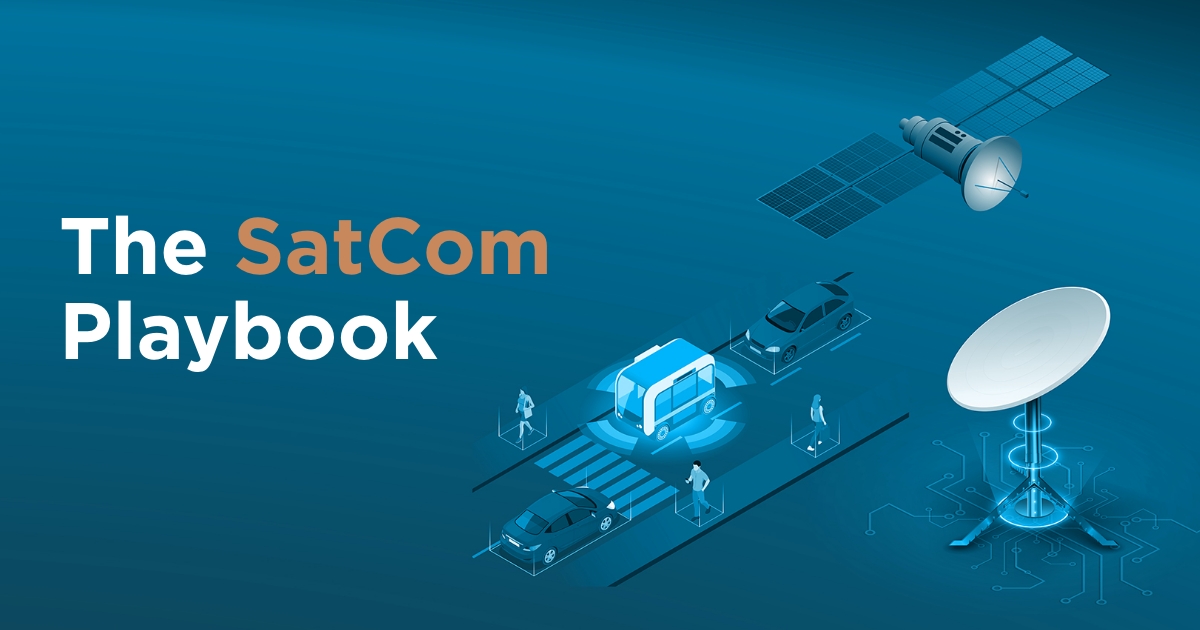Investment in digital transformation activities is expected to grow to $6.8 trillion as companies evolve into digital-at-scale enterprises. This reflects the increasing corporate commitment into leveraging digitized data to improve business processes, efficiency, and productivity and reduce costs.
Digitalisation via satellite communication services has empowered remote areas on land as well as the maritime sector with connectivity without high capital investment and complex logistics involved in the set-up and onsite maintenance of communications infrastructure. Access to new technologies and data services has been increasing. From the Internet of Things (IoT) and big data exchange to artificial intelligence (AI) and cloud computing, digitalisation and virtual applications are enabling an optimisation of capital investment.
Drivers of Digitalisation
The future of the satcom sector is expected to be influenced by two important factors.
Firstly, SpaceX, OneWeb, Telesat, Inmarsat, Intelsat, SES, Yahsat, and Thuraya have committed to expanding their services over the coming years. Having an increasing number of satcom players in the market will eventually lead to an oversupply of satellite services. This will result in airtime no longer being seen as a rare resource but rather as an essential element of a much wider communication infrastructure. This oversupply will lead to a substantial fall in airtime prices. According to a Euroconsult forecast, ARPU is expected to decline by 21 percent between 2022 and 2028.
The development of IoT, blockchain, and AI has set high expectations for future consumption, resulting in the record development of the global orbital infrastructure. In 2020 alone, the industry witnessed 1,200 LEO satellite launches with a further 1,400 in 2021.
Secondly, the Metaverse is no longer a futuristic concept, but is fast becoming reality. This is a virtual-reality space in which users can interact with a computer-generated environment and with other users. The expectations of what can be achieved by connectivity, particularly among the workers of tomorrow – Generation Z and those to follow – are anticipated to increase exponentially. They expect to be connected anytime, anywhere. And as these workers progress into managerial roles, they will require these levels of connectivity to be available and utilized in the workplace, not just in the leisure environment.
A Future-oriented Philosophy
Accordingly, satellite communications solutions providers such as IEC Telecom Group have been working towards incorporating the digital landscape in their application development processes as well as the satcom services they deliver via their strategic partners across the globe. In fact, IEC Telecom has been gradually shifting its focus from the material world (hardware) to a virtual space (via an innovative range of applications and digitally-driven services) provided on an As-a-Service mode. Moving incrementally in this direction, the company is pursuing a goal to one day create an IEC Telecom-powered AI platform, capable not only of processing and transferring data, but also of generating operational suggestions for human decision-makers.
This decision is based on the understanding that it is vital to have a future-oriented philosophy. Today, it no longer makes sense to develop solutions solely based on current market demands. Any development undertaken today needs to target the requirements that customers will have in five to ten years’ time.
Satcom-as-a-Service
In fact, from an airtime-focused and margin-driven business, satcom is transforming into an As-a-Service-based industry. The focus is switching to the variety of applications that are embedded in a portfolio of managed services.
Satellite communications solutions provider, IEC Telecom Group enables easy implementation of digitalisation strategies through a customized platform for network management that can operate in either satcom or GSM mode. OneGate provides a virtual environment and an onsite dashboard that keeps the corporate network separate from the staff network and ensures that the welfare network does not overwhelm the corporate network’s bandwidth allocation. Companies can remotely monitor, maintain, and secure their communications infrastructure and save on transport costs and logistical delays, streamlining their operations with such useful digital technologies.
Future-ready Customized Satcom Solutions
As a prime example of making current solutions future-ready to ensure the cost-effectiveness of investment into satellite communications, IEC Telecom has developed innovative solutions for high-precision video surveillance software with advanced remote access. Optimized for a low bandwidth environment, this software provides customers with access to clear visual data from a remote site and enables them to manage complex operations more efficiently in real-time due to the efficient collaboration between off-site experts and required field personnel. Not only does this reduce logistical, human resource, and communication costs, it ensures the safety of the onsite staff no matter where operations take place.
Finally, satellite-based optimized video conferencing applications have become the driving force behind a whole new range of smart services, including telemedicine, e-learning and remote maintenance. With the help of solutions, such as IEC Telecom’s OneAssist, companies are able to access real-time expert advice over a digital channel. Using smart glasses, a helmet-mounted camera, or even with their own smartphone, staff can conduct multi-party video and audio calls for easy, hands-free collaboration, and access specialist guides and manuals without fear of the link crashing or bandwidth being exceeded.
Addressing specific communications needs with future-ready bespoke satcom solutions brings a truly unique and unparalleled user experience to businesses no matter where they operate – in an exceedingly digital landscape.

